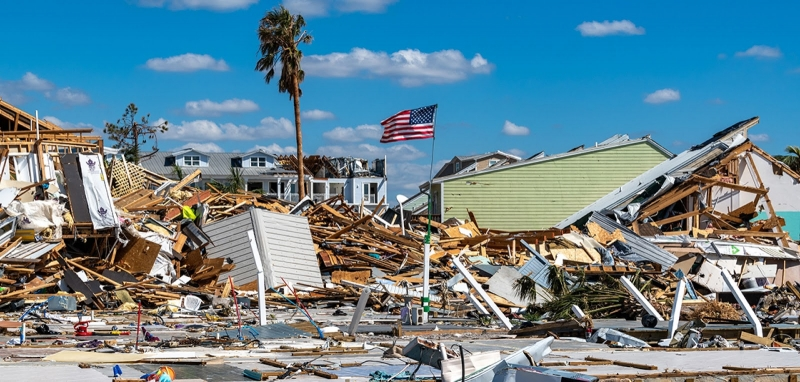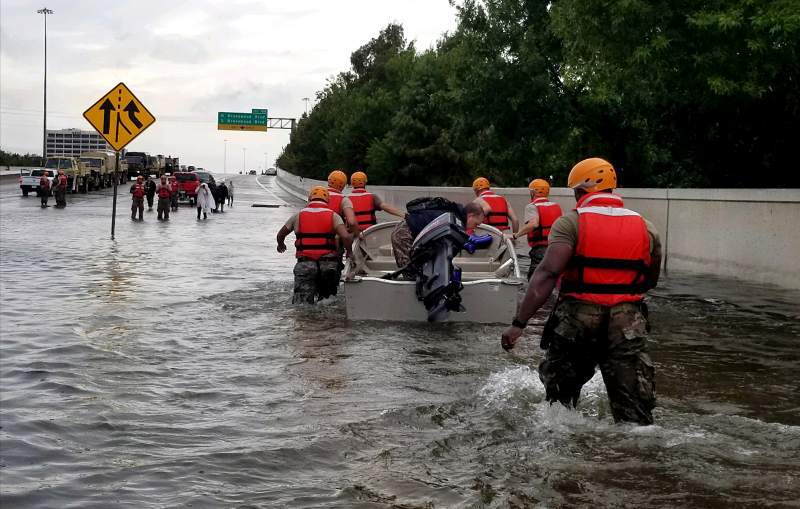Every disaster is different and can vary in size, severity, and damage. When a catastrophic disaster strikes, it can overwhelm the local and state governments to the point they cannot provide the necessary resources. During these disasters, the federal government steps in to provide help—through response support, the use of federal programs, resources, and supplies.
The Federal Emergency Management Agency (FEMA) is responsible for leading the federal government’s emergency response activities before, during, and after a national disaster to save lives, reduce suffering, and protect property and the environment. However, responding to disasters and emergencies is no small task; it requires various organizations’ and agencies’ cooperation. The larger or more complex the incident, the greater the number and variety of organizations and agencies that must respond. For example, during larger incidents such as major hurricanes or earthquakes, the incident complexity increases, and states, tribes, and ultimately the federal government becomes involved.

When a Presidential Disaster Declaration is issued, or FEMA resources are needed, various FEMA response, communications, and coordination capabilities are activated to support the response. Initial response activities on the ground help evaluate the situation and assess what other resources will be needed. This information, along with input from state, territorial, tribal, and or local jurisdictions, is used to activate additional resources under the National Response Framework (NRF) and the various Emergency Support Functions (ESFs) and Support Annexes.
What are Emergency Support Functions?
ESFs are resources organized into 15 categories that are available under the NRF, such as oil and hazardous material response, transportation, and fire fighting. ESFs provide the structure for grouping functions most frequently used to provide Federal support to states and federal-to-federal support, both for declared disasters and emergencies under the Stafford Act as well as for non-Stafford Act incidents.
For these non-Stafford Act incidents where the federal government is involved, the president may designate or the federal agencies involved may choose to recognize an agency to serve as the lead federal agency to the response. Typically, the lead activates the response structures appropriate to its authorities. To coordinate a federal response the lead employs the National Incident Management System (NIMS) and the NRF. Details regarding federal operations for non-Stafford incidents are contained within these relevant statutes and policies. Because the NRF is always in effect, ESFs may be activated and deployed to help manage any response in support of the lead. (National Response Framework)
However, ESFs are not solely attributed to any single organization, nor are they mechanisms for executing an agency’s statutory authorities. The federal ESFs bring together the capabilities and resources of federal departments, agencies, and other national-level assets.
Along with other stakeholders, ESF resources are assigned according to their capabilities, taskings, and requirements to support all levels of a federal response, such as the Joint Field Office (JFO), Regional Response Coordination Center (RRCC), or National Response Coordination Center (NRCC).
At the federal level, ESFs are groups of organizations that work together to deliver core capabilities to stabilize community lifelines in support of an adequate response. See the table below to view the ESFs and example actions that each ESF may take to support an incident.
|
|
|
|
|
ESF #1 Transportation |
Department of Transportation |
Coordinate the opening of roads and manage aviation airspace for access to health and medical facilities or services. |
|
ESF #2 Communications |
DHS/ Cybersecurity and Infrastructure Security Agency |
Provide and enable contingency communications required at health and medical facilities. |
|
ESF #3 Public Works & Engineering |
DOD/U.S. Army Corps of Engineers |
Install generators and provide other temporary emergency power sources for health and medical facilities. |
|
ESF #4 Firefighting |
USDA/U.S. Forest Service and DHS/FEMA/U.S. Fire Administration |
Coordinates federal firefighting activities and supports resource requests for public health and medical facilities and teams. |
|
ESF #5 Information & Planning |
DHS/FEMA |
Develop coordinated interagency crisis action plans addressing health and medical issues. |
|
ESF #6 Mass Care, Emergency Assistance, Temporary Housing, & Human Assistance |
DHS/FEMA |
Integrate voluntary agency and other partner support, including other federal agencies and the private sector, to resource health and medical services and supplies. |
|
ESF #7 Logistics |
General Services Administration and DHS/FEMA |
Provide logistics support for moving meals, water, or other commodities. |
|
Department of Health and Human Services (HHS) |
Provide health and medical support to communities, and coordinate across capabilities of partner agencies. |
|
|
ESF #9 Search & Rescue |
DHS/FEMA |
Conduct initial health and medical needs assessments. |
|
ESF #10 Oil & Hazardous |
Environmental Protection Agency |
Monitor air quality near health and medical facilities close to the incident area. |
|
ESF #11 Agriculture & Natural Resources |
Department of Agriculture |
Coordinate with health and medical entities to address incidents of zoonotic disease. |
|
ESF #12 Energy |
Department of Energy |
Coordinate power restoration efforts for health and medical facilities or power-dependent medical populations. |
|
ESF #13 Public Safety & Security |
Department of Justice/Bureau of Alcohol, Tobacco, Firearms, and Explosives |
Provide public safety needed security at health and medical facilities or mobile teams delivering services. |
|
DHS/Cybersecurity and Infrastructure Security Agency |
Be informed of and assess cascading impacts of health or medical infrastructure or service disruptions, and de-conflict or prioritize cross-sector requirements. |
|
|
ESF #15 External Affairs |
DHS |
Conduct public messaging on the status of available health and medical services or public health risks. |
ESF Member Roles and Responsibilities
The federal government and many state governments organize their response resources and capabilities under the ESF construct. Each ESF is composed of a federal department or agency that has been designated as the ESF coordinator, along with a number of primary and support agencies.
Primary agencies are designated based on their authorities, resources, and capabilities. Support agencies are assigned based on resources or abilities in a given functional area. To the extent possible, resources provided by the ESFs are identified consistently with the National Incident Management System resource typing categories.
FEMA may selectively activate departments and agencies supporting federal ESFs or as requested by a lead federal agency to support response activities for incidents. It is important to note that not all incidents requiring federal support result in the activation of ESFs.
When departments and agencies supporting federal ESFs are activated, they may assign staff at headquarters, regional, and incident levels. Through the Stafford Act and in accordance with 6 U.S.C. Sections 741(4) and 753(c), FEMA may issue mission assignments to obtain resources and services from federal departments and agencies.

Why are ESFs important?
ESFs have proven to be an effective way to organize and manage resources to deliver core capabilities. Here at NOAA, we are a supporting agency for several ESFs. Upon FEMA’s request, NOAA offices supporting these ESFs must be prepared to provide a broad range of expertise and services to support the response and inform recovery.
Why is this important? For NOAA’s National Ocean Service (NOS), this is not a responsibility we take lightly. Over the past few hurricane seasons, NOS offices such as the Office of Response and Restoration (OR&R), National Geodetic Survey (NGS), the Office of Coast Survey (OCS), and others have provided resources and expertise to support ESFs.
For example, upon FEMA’s request, under an ESF 10 activation, OR&R will provide scientific support to oil and chemical spills. This can include serving as a scientific support coordinator, providing information on spill trajectory, toxicity, threats to people, marine life, and infrastructure.
ESFs, prove that when agencies and organizations come together to provide resources and expertise, the collective group can better manage the disaster damages and ultimately put the community back to its original state much faster.
